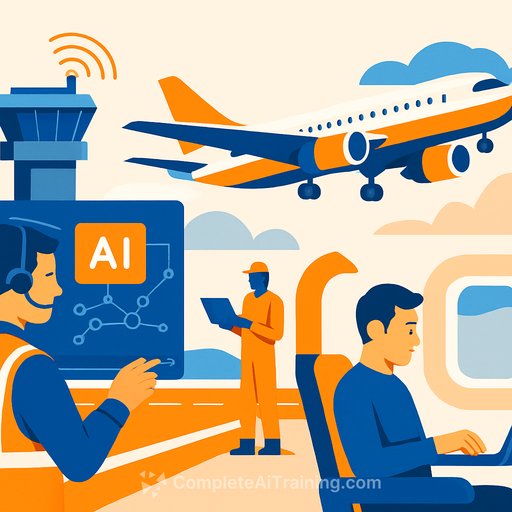How AI Is Transforming Aviation Operations and Passenger Experience
Aviation is changing in a way that’s less about new planes or routes, and more about smart algorithms. AI is shifting from a background tool to the core system running how airlines and airports work and interact with passengers.
The industry faces constant challenges: rising fuel costs, operational delays, pilot shortages, high passenger demands, and sustainability goals. AI is stepping in as a key solution, helping leaders improve efficiency, increase profitability, and offer more personalised service.
Operational Efficiency Powered by AI
A leading example is Lufthansa’s flight operations platform. It processes huge amounts of data—from aircraft telemetry, crew schedules, airspace limits, to weather—and provides real-time routing and resource advice. These aren’t just suggestions; operations teams act on them about 90% of the time. This approach delivers clear gains in fuel savings and on-time flights.
On the ground, AI is equally effective. Denver International uses biometric boarding gates to speed up passenger flow. Changi Airport employs AI systems to detect debris on runways, enhancing safety. Hong Kong’s automated baggage system handles over 15,000 bags per hour with precision, cutting errors and delays.
Improving Passenger Experience Through AI
AI is helping airlines shift from reactive to proactive service. American Airlines, for instance, uses AI to customise seat upgrade offers and travel suggestions based on passenger history and context. This kind of personalisation builds loyalty and turns occasional flyers into repeat customers.
Behind the Scenes: AI Supporting Operations
- British Airways uses RFID to reduce baggage mishandling.
- TAV Technologies applies AI and computer vision to minimise aircraft turnaround times.
- Predictive maintenance tools identify equipment issues well before they cause delays.
Embedding AI across operations creates a ripple effect: reduced costs, smarter planning, smoother workflows, and better passenger satisfaction.
Challenges and the Cultural Shift
Integrating AI isn’t simple. Old legacy systems and data governance need attention. Privacy and ethics, especially around facial recognition and biometric tracking, require open discussions. These challenges are solvable.
The bigger hurdle is mindset. Aviation leaders must view AI as fundamental infrastructure rather than a temporary fix or add-on. Those who commit to this shift will set industry standards in the years ahead.
Looking Ahead
The fastest adopters of AI in aviation will define the future benchmarks. This isn’t about flashy tools—it’s about strategic investments where real value lies. Airlines and airports that embed AI deeply across ground, flight, and digital touchpoints will be more efficient, adaptable, and competitive.
Altitude doesn’t come from technology alone—it comes from foresight. AI is giving aviation a clearer view of what’s next and how to get there.
For operations professionals interested in expanding their AI skills, resources and courses are available at Complete AI Training.
Your membership also unlocks:






